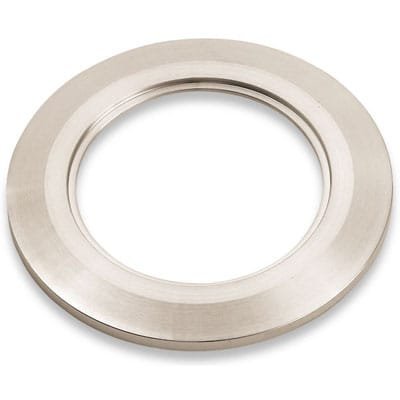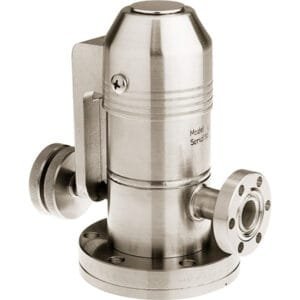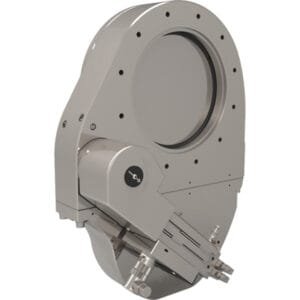Bored KF (QF) HV Stainless Steel Flanges (Inch Tube): Precision Vacuum Interfaces for Inch-Based Tubing Systems
Bored KF (QF) HV Stainless Steel Flanges (Inch Tube) are high-precision vacuum components designed for seamless integration between inch-sized tubing and standard KF (QF) vacuum flange systems. These flanges feature a centered, precision-machined bore to accept inch-dimension tubing, providing an optimal foundation for TIG welding, brazing, or compression fittings in custom vacuum line construction.
Manufactured from durable 304L stainless steel, Bored KF (QF) HV Stainless Steel Flanges (Inch Tube) offer superior corrosion resistance and high-temperature stability, making them ideal for use in chemically aggressive or thermally demanding high-vacuum (HV) applications. These flanges are most commonly employed in foreline systems, HV chamber ports, and instrumentation interfaces where permanent, leak-tight tubing connections are essential.
The core of the design is the KF (QF) sexless flange, which allows easy and repeatable mating with all other KF-standard hardware. The flange connects using a centering ring with an elastomeric o-ring, seated securely between the chamfered flange faces. When tightened with a circumferential clamp—whether wing-nut, thumbscrew, bolt, or over-center lever—the system forms a robust vacuum seal capable of operating at pressures down to 10⁻⁸ torr.
The bore at the center of each Bored KF (QF) HV Stainless Steel Flange (Inch Tube) is precisely sized to match common inch-based tubing diameters, such as 0.5″, 0.75″, 1.0″, and 1.5″. This ensures a snug fit for joining operations, reducing the need for reducers or sleeves when adapting custom stainless steel lines to standard KF ports.
With a working temperature range of 0 °C to 120–180 °C (depending on o-ring material), these flanges are suited for use in vacuum environments ranging from ambient pressure down to ultra-high vacuum conditions. They are widely used in scientific research, semiconductor production, vacuum drying systems, and custom OEM vacuum assemblies that rely on imperial (inch) tubing standards.
All Bored KF (QF) HV Stainless Steel Flanges (Inch Tube) are manufactured to exacting tolerances and finished to ensure low outgassing and particle emission—qualities essential for reliable long-term performance in HV applications. Standard KF sizes include KF16, KF25, KF40, and KF50, with bores available in corresponding inch diameters. For non-standard requirements, TFM also offers custom fabrication, including electropolished surfaces, special bore dimensions, or vented holes for differential pumping applications.
In summary, Bored KF (QF) HV Stainless Steel Flanges (Inch Tube) provide a precise, durable, and vacuum-tight connection solution for systems utilizing inch-based tubing. Their high-quality stainless steel build, KF standard compatibility, and robust sealing performance make them an indispensable part of any professional vacuum system.
Ordering Table
Accessories Table
| Description | For | Per Package | Part Number | Price |
| Cast Clamps (SS) | KF10, KF16 Flanges | 1 | QF16-075-CS | $62.25 |
| Cast Clamps (SS) | KF25 Flanges | 1 | QF25-100-CS | $68.85 |
| Cast Clamps (SS) | KF40 Flanges | 1 | QF40-150-CS | $75.00 |
| Cast Clamps (SS) | KF50 Flanges | 1 | QF50-200-CS | $90.00 |
| Cast Clamps (Aluminum) | KF10, KF16 Flanges | 1 | QF16-075-C | $6.95 |
| Cast Clamps (Aluminum) | KF25 Flanges | 1 | QF25-100-C | $8.80 |
| Cast Clamps (Aluminum) | KF40 Flanges | 1 | QF40-150-C | $10.15 |
| Cast Clamps (Aluminum) | KF50 Flanges | 1 | QF50-200-C | $16.60 |
| Lever Clamps (Aluminum) | KF10, KF16 Flanges | 1 | QF16-075-CHA | $52.85 |
| Lever Clamps (Aluminum) | KF25 Flanges | 1 | QF25-100-CHA | $75.00 |
| Lever Clamps (Aluminum) | KF40 Flanges | 1 | QF40-150-CHA | $87.65 |
| Centering Ring (SS with Fluorocarbon O-Ring) | KF10 Flanges | 1 | QF10-050-SRV | $7.75 |
| Centering Ring (SS with Fluorocarbon O-Ring) | KF16 Flanges | 1 | QF16-075-SRV | $8.55 |
| Centering Ring (SS with Fluorocarbon O-Ring) | KF25 Flanges | 1 | QF25-100-SRV | $11.25 |
| Centering Ring (SS with Fluorocarbon O-Ring) | KF40 Flanges | 1 | QF40-150-SRV | $13.50 |
| Centering Ring (SS with Fluorocarbon O-Ring) | KF50 Flanges | 1 | QF50-200-SRV | $19.50 |
| Description | For | Per Package | Part Number | Price |





Reviews
There are no reviews yet.